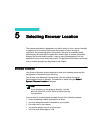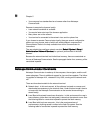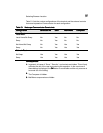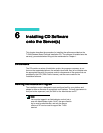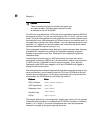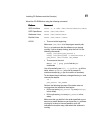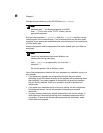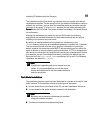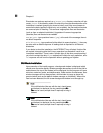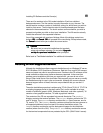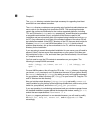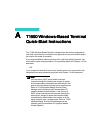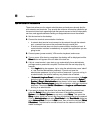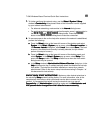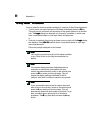
Installing CD Software onto the Server(s)
43
4343
43
The installation script will not install any software onto your system until after all
responses are entered. The last prompt will tell you when the installation is ready to
proceed. Up until then, you can abort the installation safely by using the interrupt
character (or by typing “
q
” for the
yes
/
no
prompts) for text mode or pressing the
Cancel
CancelCancel
Cancel
button for GUI mode. Text mode will abort immediately; GUI mode will ask
for confirmation.
Although the procedures are similar for text and GUI modes, the following
descriptions are provided individually for each mode since the user will only be
installing in one mode on any one server.
By default, all installed software will be placed in a subdirectory of the
/T1500
directory (which can be created beforehand as a symbolic link, if desired).
The first location prompt will allow you to specify a new default. In picking the
default, however, be aware that some BOOTP servers restrict you to a total of 64
bytes of options, so the root directory path must be short. If TFTP is configured on
your server, the value given for its default will override your selected default for that
one response, but you can change the directory, overriding the default (you will
then need to fix the
/etc/inetd.conf
or equivalent file, as well). For Windows
installation, the default is
c:/T1500
.
Note
NoteNote
Note
If installing or upgrading and a prior release is on the
system, it is recommended that you use the same
servers and directories for the new release that were
used for the old one.
Text-Mode Installation
Text-Mode InstallationText-Mode Installation
Text-Mode Installation
The installation program output has been formatted for a screen of at least 24 lines
by 80 columns. The installation consists of three types of operations:
1.
1.1.
1.
You are asked which of the items on the CD you want installed on this server.
2.
2.2.
2.
You are asked for file and/or directory names for the destination.
Note
NoteNote
Note
Be careful not to overwrite installations for terminals
using prior software releases
3.
3.3.
3.
The files are installed in the appropriate places.



